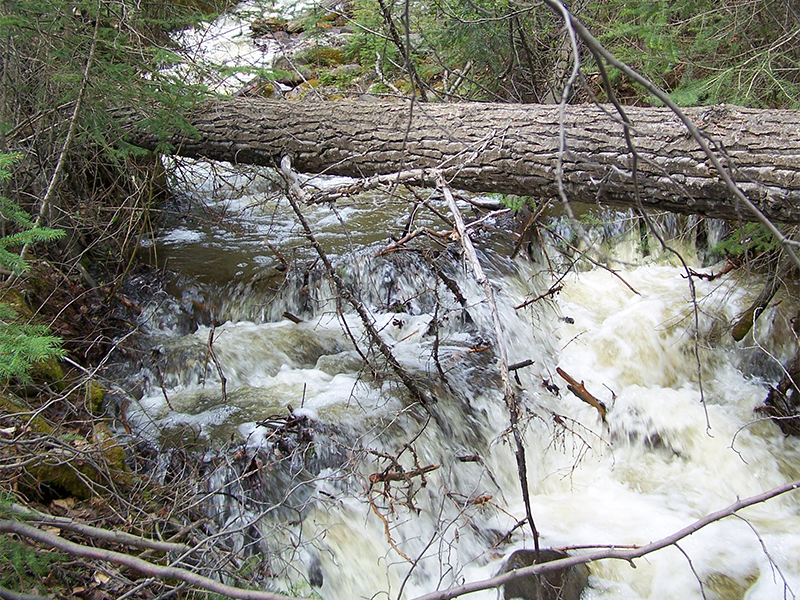
Abstract
Large woody debris (LWD) significantly influences the structure and function of small headwater streams. However, what it contributes to geomorphic function depends on where it is located relative to the stream channel. We quantified LWD abundance and tested for associations among decay, position, orientation and function classes in 21 streams near Hinton, Alberta, Canada. LWD was more frequent (64.0 ± 3.3 LWD 100 m−1) in streams in the Alberta foothills than it was in small streams in mountain, coastal, broadleaf deciduous and boreal forests, likely due to the narrow channel widths and low capacity of our study streams to transport logs downstream. LWD volumes were greater in coastal streams than in the Alberta foothills, likely due to differing tree sizes and decay rates. LWD morphology changed significantly as logs decayed and transitioned to different position and orientation classes. LWD in decay classes I and II were longest, most commonly in the bridge and partial bridge position classes, oriented perpendicular to stream flow, suspended above the channel and contributing least to stream geomorphic functions. LWD length and volume (but not diameter) decreased as decay advanced, making logs less stable. LWD in decay classes III and IV were strongly associated with partially bridged, loose, and buried position classes. They were more commonly diagonal or parallel to stream flow and contributed to bank stability, sediment retention, debris jams and riffle and pool formations. These results have been integrated into a conceptual model of LWD dynamics that provides a framework for future research on the mechanisms and rates of LWD recruitment, decay, transport and function.
Citation
Jones, T.A. L. D. Daniels, and S. R. Powell. 2011. Abundance and function of large woody debris in small headwater streams in the Rocky Mountain foothills of Alberta, Canada. River Research and Applications. 27: 297-311. doi: https://doi.org/10.1002/rra.1353
To obtain a copy of this paper, please contact Dr. Lori Daniels.






